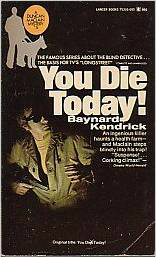Best Max Carrados Detective Stories by Ernest Bramah
Review by Matt B. (BuffaloSavage)
It is a tribute to his imagination and writing ability that Englishman Ernest Bramah (1868 – 1942) remains fairly well-known as the author of the Kai Lung stories, artistically licensed as narrated by a Chinese teller of tales.
Bramah’s Max Carrados books are also well-regarded. The books are collections of short stories starring a wealthy blind man, Max Carrados, one of whose hobbies, besides collecting ancient Greek coins, was criminal investigation. This Dover reprint kicks off with the story that introduces Carrados and his pompous sidekick the professional PI Louis Carlyle “The Coin of Dionysius.”
But a better story is the second one “The Mystery of the Vanished Petition Crown.” A coin collector himself, Bramah uses his own experience with coin dealers and coin auctions to write this persuasive story. After finding the missing coin with supernatural insight, Carrados tells us mortals how to do his method, as if Zeus were instructing us dudes on how to become swans to attract the ladies:
[T]here is no form of villainy that I haven’t gone through in all its phases. Theoretically, of course, but so far as working out the details is concerned and preparing for emergencies, efficiently and with craftsman-like pride. Whenever I fail to get to sleep at night-rather frequently, I’m sorry to say–I commit a murder, forgery, a robbery or what not with all its ramifications … the criminal mind is rarely original, and I find that in nine cases out of ten that sort of crime is committed exactly as I have already done it.
“The Holloway Flat Tragedy” is a departure from the usual “inexplicable crime” story in that it involves a murder, but its psychological insight is convincing and the twist is quite satisfying. Other stories involves puzzling cases Louis Carlyle has brought to involve nutty but all too human behavior such as “The Ghost at Massingham Mansions” or “The Mystery of the Poisoned Dish of Mushrooms,” or the unique “ The Disappearance of Marie Severe,” which includes tough smacks at Christian Science and its obnoxious American proponents.
The appeal of the stories is that an attention to detail and robust characters contribute to an air of verisimilitude. Also attractive are the Edwardian interjections “egad” and “pshaw” not to mention turns of phrase like “But, for all that, I feel devilishly bad.” This kind of Dickensy turn, a reader likes or doesn’t like, I suppose:
Mr Carlyle had no difficulty in discovering the centre of interest in the basement. Sir Benjamin was expansive and reserved, bewildered and decisive, long-winded and short-tempered, each in turn and more or less all at once. He had already demanded the attention of the manager, Professor Bulge, Draycott and two underlings to his case and they were now involved in a babel of inutile reiteration. The inquiry agent was at once drawn into a circle of interrogation that he did his best to satisfy impressively while himself learning the new facts.
“A babel of inutile reiteration.” It’s been a long time since I felt that rush of a thirteen-year-old reader, that buzz a reading kid gets from seeing new words deployed in new ways, usually in Sherlock Holmes stories. Plus, “a babel of inutile reiteration” perfectly describes too many meetings that, because I am a sinner, I am compelled to attend….
I don’t think the more far-fetched stories are any more far-fetched than a Sherlock Holmes story such as “Speckled Band.” Some points test skepticism. Max Carrados has supernaturally sensitive finger-tips, so he can read the headlines and even some of the 12-point in an ordinary newspaper. Ink is raised on the rough paper of a newspaper, don’t you know? Carrados’ super-sharp sense of temperature changes, hearing, taste and smell also allow him to gather clues out of the ken of us seeing folk. His disability is no barrier to excellence.
I unearthed this book on the recommendation of George Orwell. In the essay “Good Bad Books” he cites Ernest Bramah by name as the writer of “[a] type of book which we hardly seem to produce in these days, but which flowered with great richness in the late nineteenth and early twentieth centuries, is what Chesterton called the “good bad book”: that is, the kind of book that has no literary pretensions but which remains readable when more serious productions have perished.” The Max Carrados stories have remained in print for about a century by now and at present are available in various electronic formats (and free at Project Gutenberg). What better proof that they have stood the test of time?












